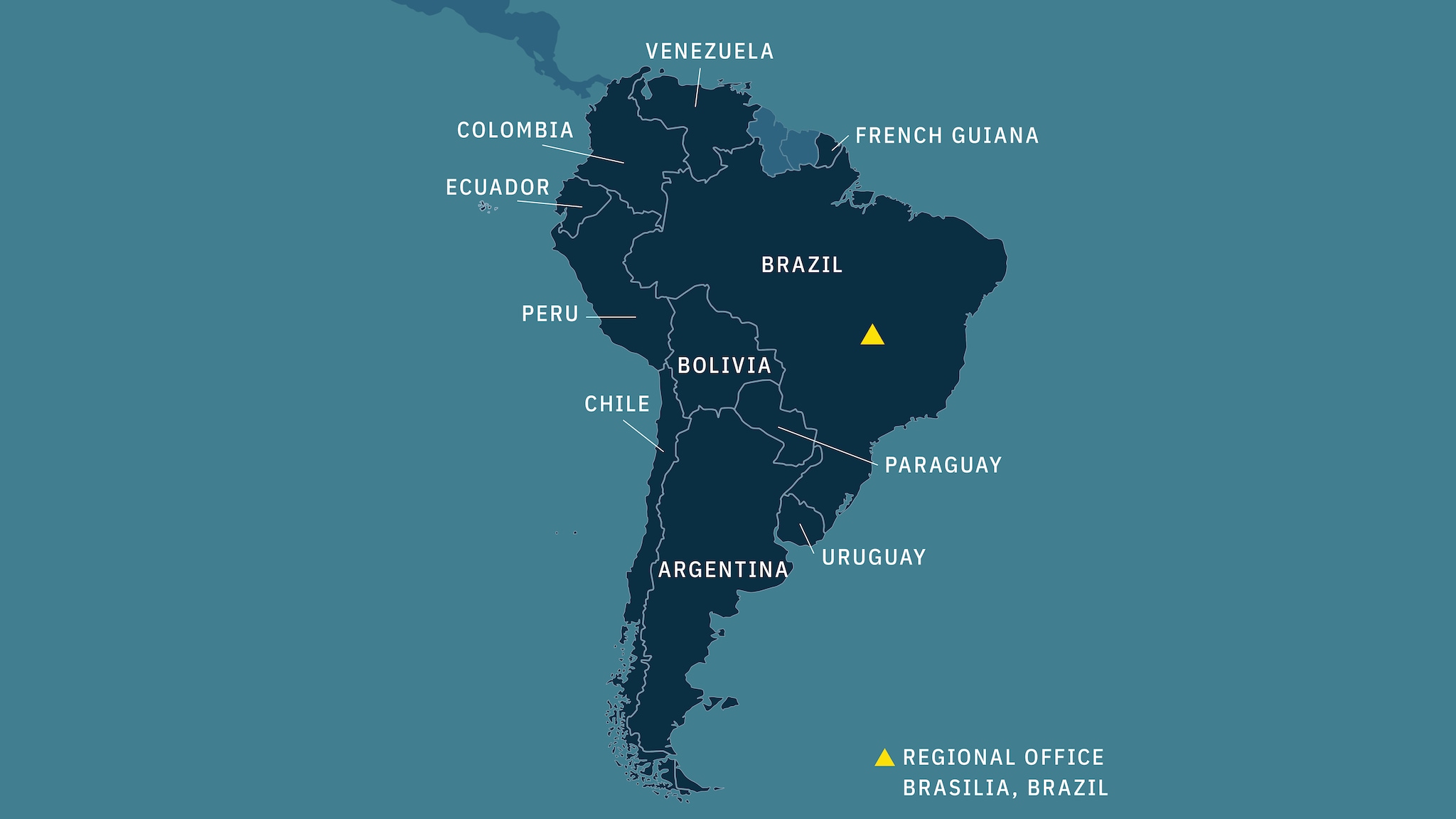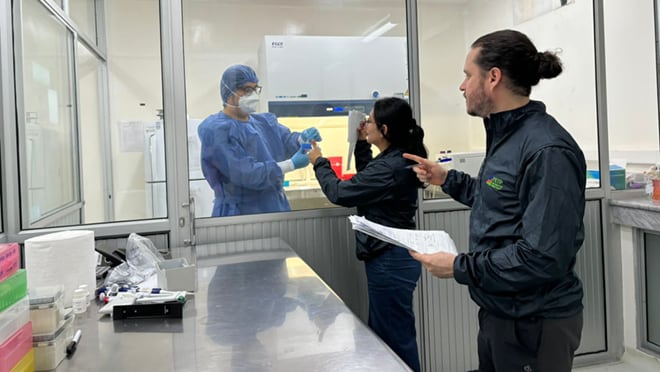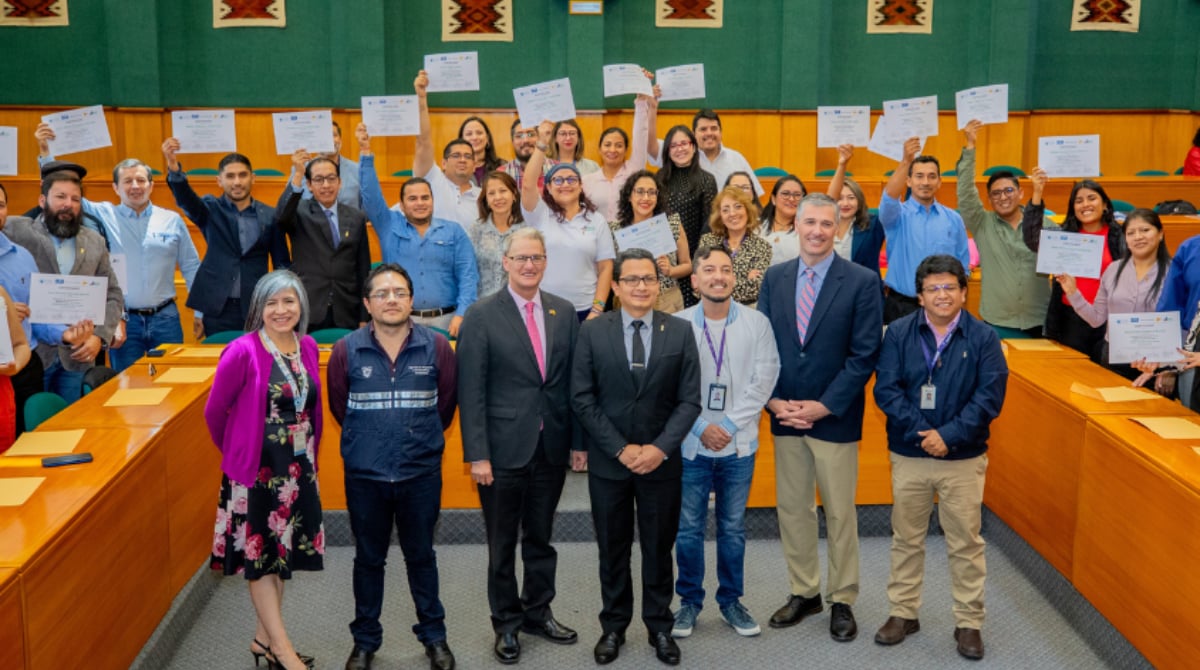At a glance
Established in 2020, U.S. CDC South America Regional Office (SAMRO), located in Brasilia, Brazil, strengthens and expands CDC’s historically limited footprint in the region. Strategic global partnerships strengthen health systems in the region, reducing strain on U.S. resources and enhancing readiness against health threats. U.S. CDC advances regional health security to stop disease outbreaks at their source, making America safer.

Overview

The South America region covers the entire continent of South America. The region, which is home to approximately 427 million people, is served by CDC SAMRO based in Brasilia, Brazil. SAMRO supports CDC staff placed in Argentina and Ecuador. In addition, CDC has one country office in the region (in Brazil).
CDC historically had a small footprint in South American countries in the region. However, through a variety of collaborations, CDC programs have made progress on public health issues including, but not limited to, Zika, HIV/AIDS, tuberculosis, malaria, influenza, vaccine-preventable disease, foodborne and waterborne diseases, and high consequence pathogens. Over the years, there has been major progress in the control of these threats. However recent issues, such as economic and humanitarian crises, have led to considerable challenges to public health systems across the region.
In addition to personnel in the region, subject matter experts at CDC headquarters in Atlanta, GA, provide technical support to these offices, as well as to partners across the region.
Regional goals
U.S. CDC and partners are collaborating to:
- Provide early warning for health threats.
- Detect changes in disease patterns, including the emergence or re-emergence of pathogens.
- Modernize health information and disease surveillance systems.
- Use data for public health action.
- Strengthen laboratory quality systems.
- Upskill and expand the public health workforce.
- Respond effectively to public health emergencies.
- Prevent and control disease.
Sucess story spotlight
Improving Laboratory Quality in South America
The U.S. Centers for Disease Control and Prevention (CDC) recently supported the first Stepwise Laboratory Quality Improvement Process Towards Accreditation (SLIPTA) auditor training for South America in Belém, Brazil. SLIPTA enhances laboratory quality management to meet international standards and strengthen laboratory networks that are crucial to detect, prevent, and combat health threats like COVID-19, Oropouche, and dengue outbreaks within and beyond South America.
Recent reports of travel-related Oropouche and locally acquired dengue cases in the U.S. highlight the need to expand quality-assured diagnostic testing capacity in South America, the epicenter of both outbreaks. Strengthening this capacity is essential to enhancing disease detection, surveillance, control and prevention in the region.
Certified Laboratory Auditors
The introduction of SLIPTA in South America represents an opportunity to significantly raise the quality standards for laboratories at all levels regionwide. Participants from Brazil, Argentina, and Paraguay applied new skills conducting mock lab audits in real world settings using the SLIPTA checklist, helping them identify improvement in areas such as document management and quality assurance.
Collaboration and Sustainability
The training in Brazil was a collaboration between U.S. CDC's South America Regional Office (SAMRO) led by Dr. Luciana Kohatsu, the Brazilian Secretariat of Health and Environmental Surveillance's General Coordination of Laboratories, and the State of Pará's Public Health Secretariat. U.S. CDC SAMRO worked with the African Society for Laboratory Medicine (ASLM) and partners to organize and lead the training. ASLM conducted the first stage of the training based on principles of collaboration, ownership and sustainability. Brazil's initiative to embrace the SLIPTA checklist shows their commitment to enhancing laboratory systems in the region.
Moving Toward Accreditation
With the SLIPTA auditing knowledge, Argentina and Brazil also plan to leverage the Strengthening Laboratory Management Toward Accreditation (SLMTA) program for structured improvements, aiming for ISO 15189 accreditation. SLIPTA and SLMTA initiatives will enhance lab capacity to address public health disease dynamics in South America.


